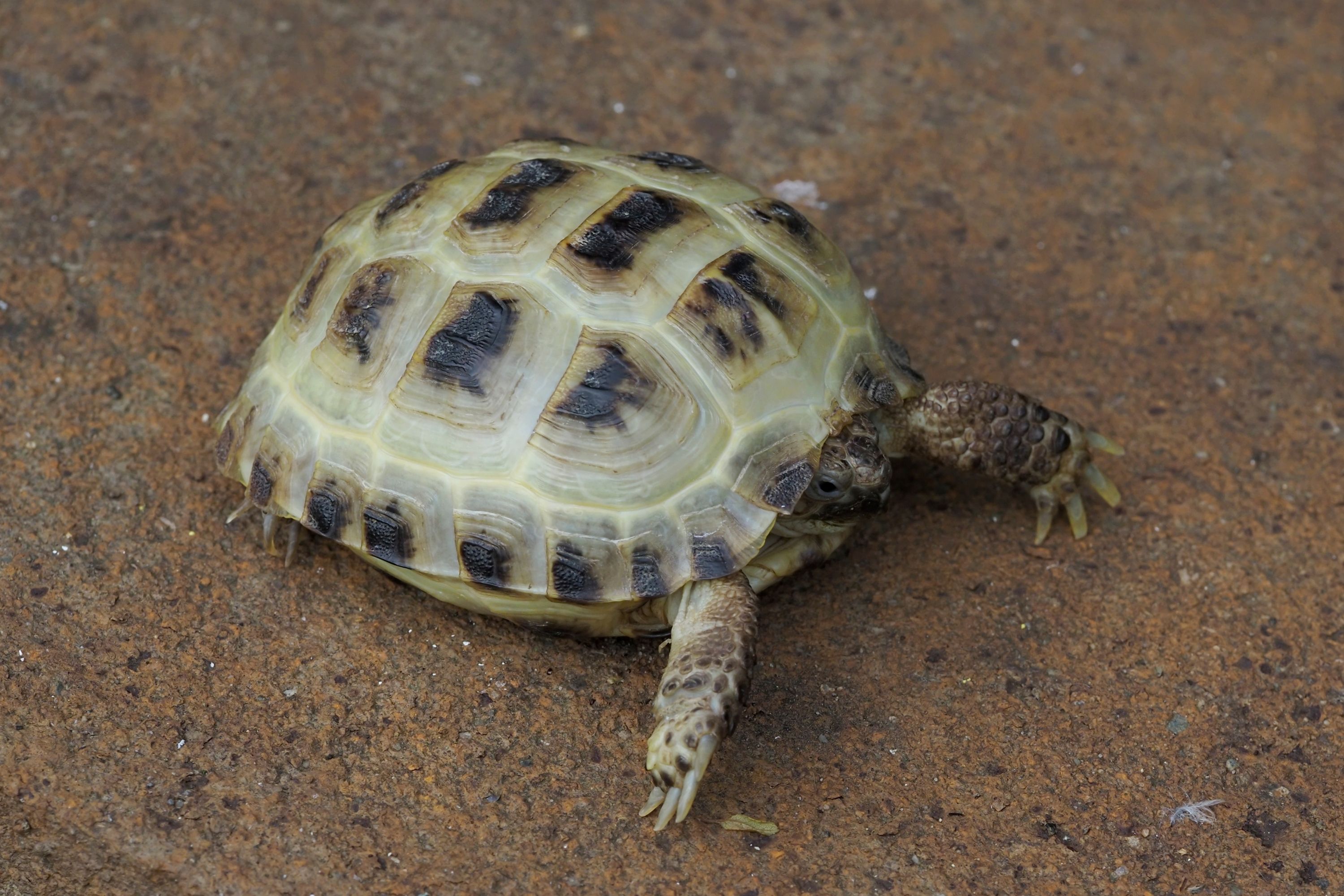Russian tortoise
(Testudo horsfieldii)

Description
The Russian tortoise (Testudo horsfieldii), also commonly known as the Afghan tortoise, the Central Asian tortoise, Horsfield's tortoise, four-clawed tortoise, and the (Russian) steppe tortoise, is a threatened species of tortoise in the family Testudinidae. The species is endemic to Central Asia. Human activities in its native habitat contribute to its threatened status. The Russian tortoise is a small tortoise species, with a size range of 13–25 cm (5–10 in). Females grow slightly larger (15–25 cm 6–10 in) to accommodate more eggs. Males average 13–20 cm (5–8 in). Russian tortoises are sexually dimorphic. Males tend to have longer tails generally tucked to the side, and longer claws; females have a short, fat tail, with shorter claws than the males. The male has a slit-shaped vent (cloaca) near the tip of its tail; the female has an asterisk-shaped vent (cloaca). Russian tortoises have four toes. Coloration varies, but the shell is usually a ruddy brown or black, fading to yellow between the scutes, and the body is straw-yellow and brown depending on the subspecies. The male Russian tortoise courts a female through head bobbing, circling, and biting her forelegs. When she submits, he mounts her from behind, making high-pitched squeaking noises during mating. The species can spend as much as 9 months of the year in dormancy. Both the specific name, horsfieldii, and the common name "Horsfield's tortoise" are in honor of the American naturalist Thomas Horsfield. Russian tortoises are popular pets. They can be kept indoors or outdoors, but outdoor tortoise enclosures generally require less equipment and upkeep, and are preferable if the keeper lives in an appropriate climate. Indoor enclosures should measure 8’L x 4″W x 2.5’H, or otherwise offer 32 square feet of floor space. Indoors, specialized equipment is required to maintain moderate temperatures and moderate humidity, with UVB light available in an appropriate strength. In captivity, Russian tortoises’ diet typically consists of lamb's lettuce, plantains and various other dark leafy greens. The diet should be as varied as possible to reduce the risk of imbalanced nutrition. Water is important for all species; the tortoise, being an arid species, will typically get water from their food, but they still need a constant supply. Young Russian tortoises should be soaked 1-2x/weekly in lukewarm water no deeper than their elbows to keep hydrated.
Taxonomic tree:







